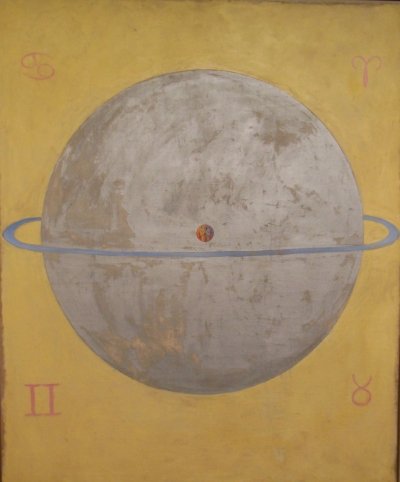I will make a case why the planet Pluto does not belong in the astrological system. In 2006 it was downgraded by the astronomical community to a dwarf planet. Pluto is a body of the Kuiper Belt which is a disc-shaped region found in the outer solar system, extending out from the orbit of the planet Neptune. The discovery of other objects in the Kuiper Belt, starting in 1992, confirmed the view that Pluto belongs to a vast array of similar objects orbiting beyond Neptune. Some of these objects, such as Eris, Haumea and Makemake, are very similar in size to Pluto, some of them even bigger.
These Kuiper Belt objects are drastically different from Neptune and the other (classical) planets, both in how they formed and in how they got to their current orbits. Thereby, Pluto is definitely not a planet. It is estimated that there are around 35,000 Kuiper belt objects that are larger than 100 km in diameter. The known icy worlds and comets in this region are all much smaller than even Earth’s Moon.
The Solar system thus encompasses the sphere of the eight planets circling the Sun from Mercury to Neptune, constituting the Inner Solar system, and all these planets have almost circular orbits that lie within a nearly flat disc called the Ecliptic. Next lies the Kuiper Belt and beyond the Oort Cloud which is an extended shell of icy objects that exist in the outermost reaches of the solar system.
Astronomically, Pluto is not any more considered a planet. It was an erroneous astronomical judgement made 90 years ago and revised in 2006. But astrologers held on to their Pluto, having so much invested into this avatar from beyond.
A model of distance and size will show why the inclusion of Pluto as a planet does not work. Imagine a helium infused balloon, one used for balloon rides, about 50 ft. in diameter, as the center, representing the Sun. About a mile away the Earth would be circling, its size about that of a grapefruit. Further out, 30 miles away, Neptune is circling, about the size of a beach ball. What about Pluto? You would have to spot it floating somewhere about 40 miles away from the balloon being just the size of a toy marble. (On another scale, if the Sun would be a globe of about 5 ft. in diameter, the Earth would be slightly smaller than a penny in a distance the length of a football field, Neptune the size of a golf ball three miles away and Pluto the size of a short grain of rice four miles away). Pluto is simply off-scale in regard to the inner Solar system.
If one nevertheless wants to keep Pluto as part of the astrological system, then the logic should be extended to Haumea, Makemake and Eris, other dwarf planets the size of Pluto, or even bigger, that circle the Sun in Plutonian distance. What would they stand for? Trying to get a clue from the names they were assigned will hardly help: Haumea and Makemake being goddess and god of fertility in the Hawaiian religion and Eris was the Greek goddess of chaos, strife and discord. Either unaware, or at a loss for answers, astrologers stayed put with Pluto, at the expense of critical thinking.
Venetia Burney, an eleven-year-old schoolgirl in Oxford, England, who was interested in classical mythology, could hardly have imagined the confusion she would create in astrological circles when she suggested the name Pluto for the newly discovered planet in a conversation with her grandfather, a former librarian at the University of Oxford's Bodleian Library, who passed the name on to the university’s astronomy professor, who cabled it to colleagues in the United States. Lowell Observatory, which had the right to name the new object, had already received more than 1,000 suggestions from all over the world, ranging from Atlas to Zymal. Each member of the Lowell Observatory was allowed to vote on a (by then very shortened) list of three potential names: Minerva, Cronus and Pluto. Pluto received every vote. The final choice of name was helped in part by the fact that the first two letters of Pluto are the initials of Percival Lowell, the founder of the Observatory where the search for a ninth planet was begun in 1906. The name was announced on May 1, 1930.
(revised Sep. 3rd, 2019)
Venetia Burney, 11 years old



